Key takeaways:
- Emotional feedback from users is crucial as it highlights the impact of design choices on user satisfaction and engagement.
- User testing methods, such as moderated usability testing and A/B testing, provide actionable insights by revealing genuine user interactions and preferences.
- Defining clear objectives and preparing targeted tasks enhances the effectiveness of user testing sessions, leading to more valuable feedback.
- Analyzing feedback for patterns and engaging with users post-implementation fosters a sense of community and drives continuous improvement in design.
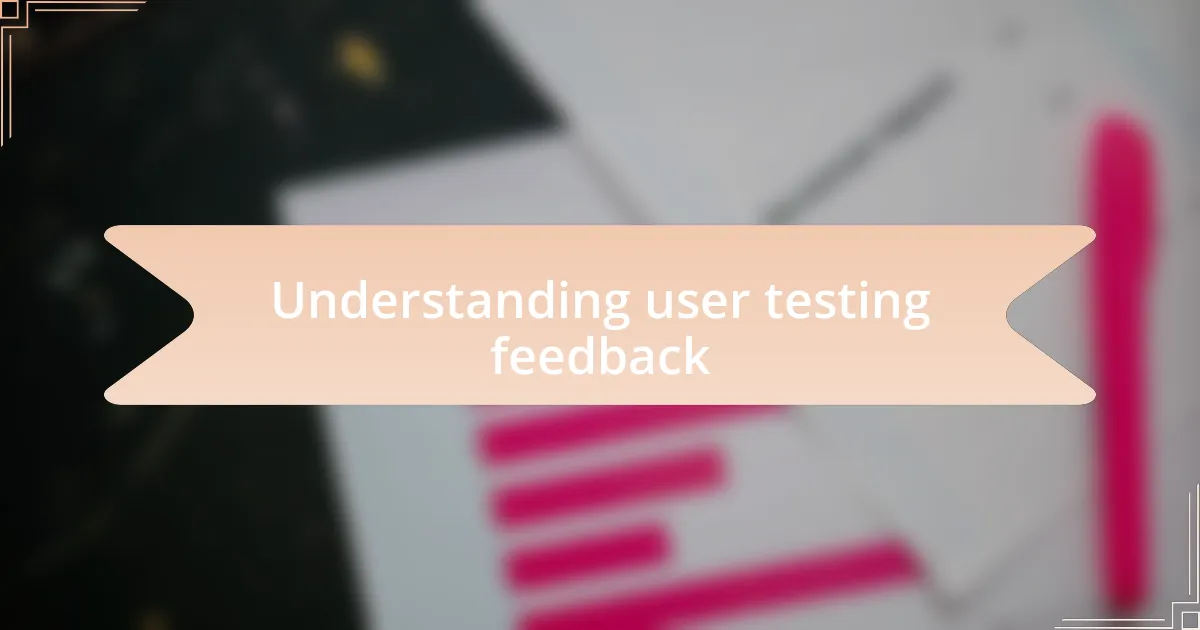
Understanding user testing feedback
When I first started analyzing user testing feedback, I felt overwhelmed by the sheer volume of information. I remember sifting through countless comments and suggestions, wondering how to prioritize them. Would the users’ experiences reveal the changes needed to make my infographics more effective? Ultimately, I learned that focusing on common themes made the process manageable and insightful.
One thing that stood out to me was how emotional feedback could be. Certain users expressed frustration over navigation issues, while others celebrated features they found intuitive. This dichotomy made me realize that understanding user emotions is critical; after all, satisfaction often drives engagement. Have you ever used a site that was so frustrating you just walked away? That’s something I strive to avoid at all costs.
As I continued to delve into user feedback, I recognized the importance of context. It wasn’t enough to simply read what users said; I needed to consider their backgrounds and experiences. For instance, a user familiar with design might critique aspects differently than a novice. This realization pushed me to seek deeper insights, transforming user feedback from a list of suggestions into a rich narrative about real people and their real needs.
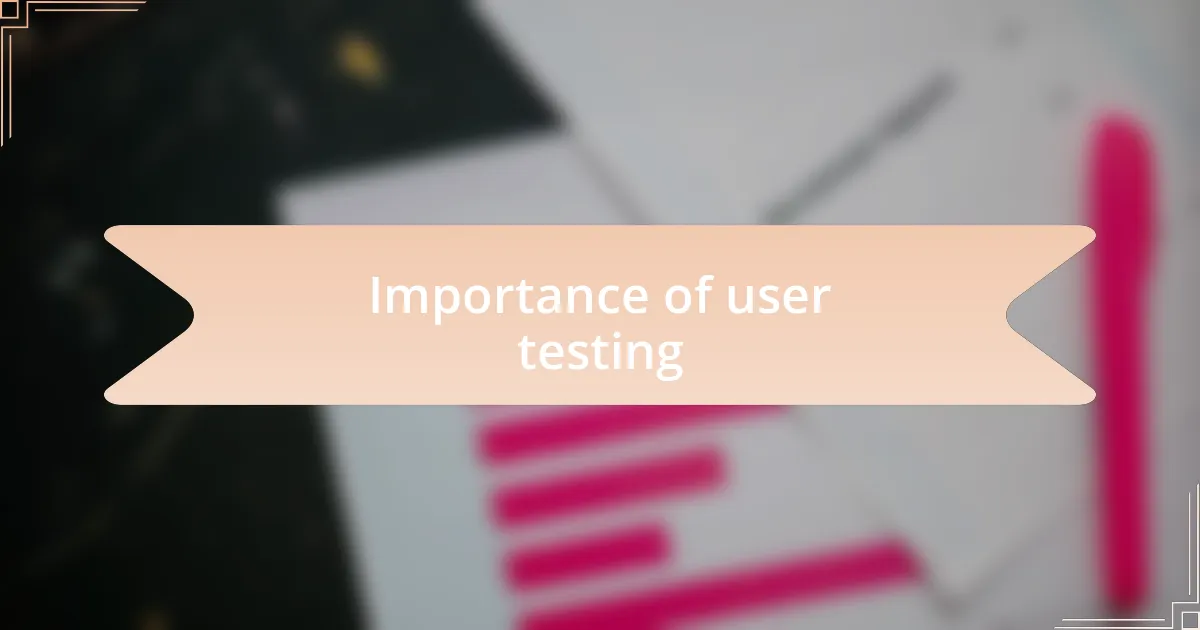
Importance of user testing
User testing is crucial because it reveals users’ genuine interactions with a product. I vividly remember the day I watched a group of users navigate my infographic-sharing platform. Their candid reactions, both positive and negative, provided me with immediate, actionable insights. Isn’t it fascinating how something simple, like a button placement, can drastically affect user experience?
I’ve often noticed that user testing not only highlights usability issues but also uncovers opportunities for innovation. During one session, a user mentioned they wished for an interactive element that I hadn’t even considered. That sparked an idea, and we implemented it, resulting in increased engagement. Have you ever had someone suggest something that completely transformed your perspective? Those moments are priceless.
Moreover, the emotional responses during user testing served as a powerful reminder of how design choices resonate on a personal level. I recall a user praising a particularly colorful infographic, sharing how it reminded them of a cherished memory. This connection made me realize that user testing isn’t just about improving usability; it’s about creating meaningful experiences. How often have you encountered a design that spoke to your emotions? It’s these kinds of insights that reaffirm the importance of user testing in crafting user-centric experiences.
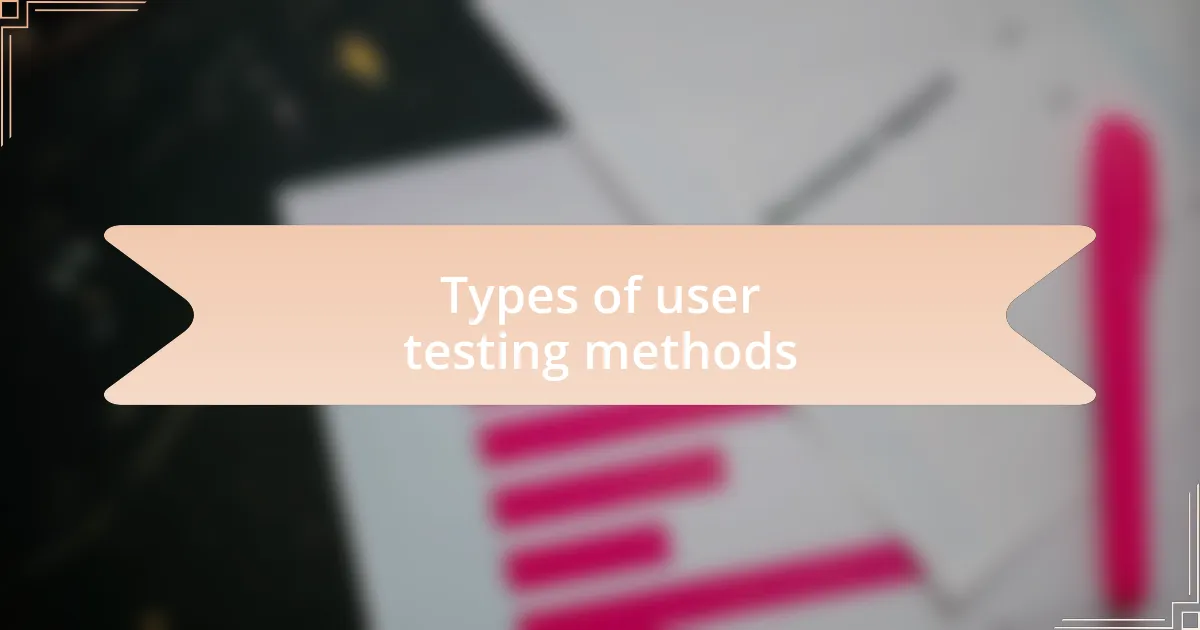
Types of user testing methods
When it comes to user testing methods, one approach I’ve found particularly effective is moderated usability testing. In a recent session, I guided participants through the platform while encouraging them to think out loud. Listening to their real-time thoughts offered me a window into their pain points and preferences that I hadn’t anticipated. It’s quite revealing when users articulate what they like or dislike as they engage with the design—have you seen how their expressions shift with different features?
On the other hand, unmoderated remote testing has its own unique advantages. I recall using this method when we needed feedback from a wider audience scattered across different locations. Participants interacted with the platform in their natural environment, which led to some unexpected reactions. One user laughed at a quirky infographic feature while another struggled with a particular navigation option. How valuable is it to observe genuine, unscripted experiences?
Lastly, A/B testing has always been a useful tool for me in making data-driven decisions. I remember launching two different versions of a landing page simultaneously and analyzing which one resonated more with users. The resulting insights not only informed us about aesthetics but also influenced our content strategy. Isn’t it empowering to base decisions on actual user preferences rather than guesswork?
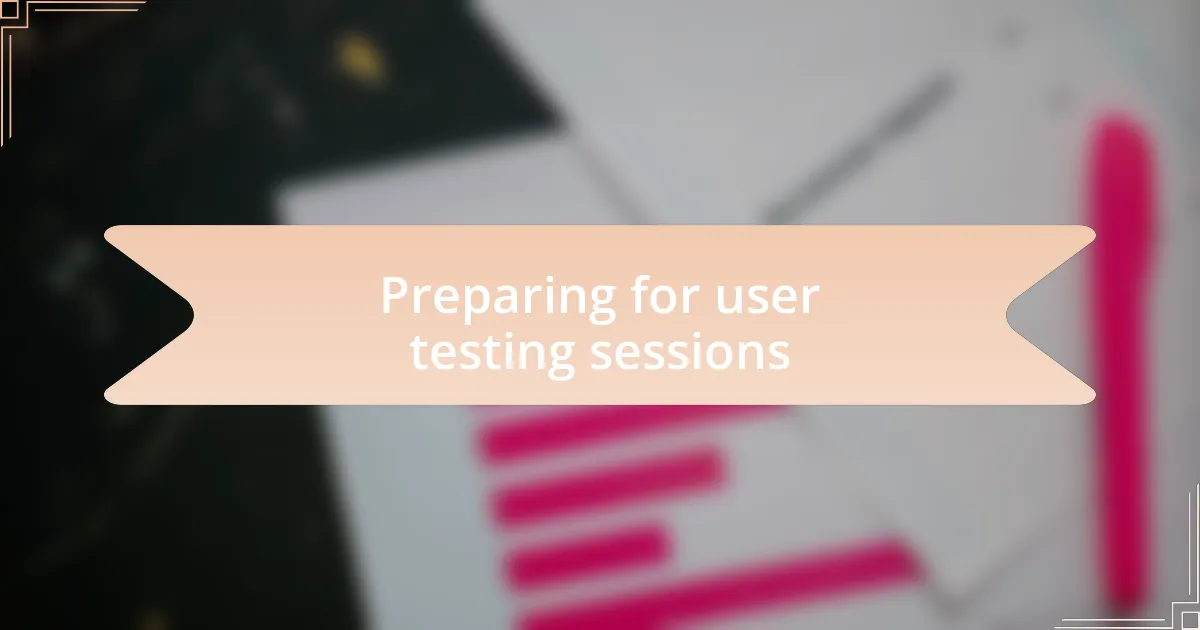
Preparing for user testing sessions
Before diving into user testing sessions, I believe it’s crucial to define clear objectives. In my experience, pinpointing what I want to learn helps streamline the entire process. For instance, I once entered a session unsure whether to focus on usability or aesthetic appeal, and the results felt scattered. Have you ever found yourself lost in the myriad of user feedback?
Preparing the right materials is another essential step. I’ve found that crafting scenarios and specific tasks for participants can significantly enhance the quality of feedback. One time, I designed a task that asked users to find specific information in an infographic, which revealed unexpected navigation hurdles. How much more insightful is targeted feedback than vague responses?
Lastly, making participants feel comfortable is key to eliciting genuine responses. I remember starting a session with a light-hearted icebreaker, which helped participants relax and opened the floor for candid thoughts. When users feel at ease, their feedback often becomes richer and more valuable. Have you noticed how a simple connection can change the dynamics of a testing session?
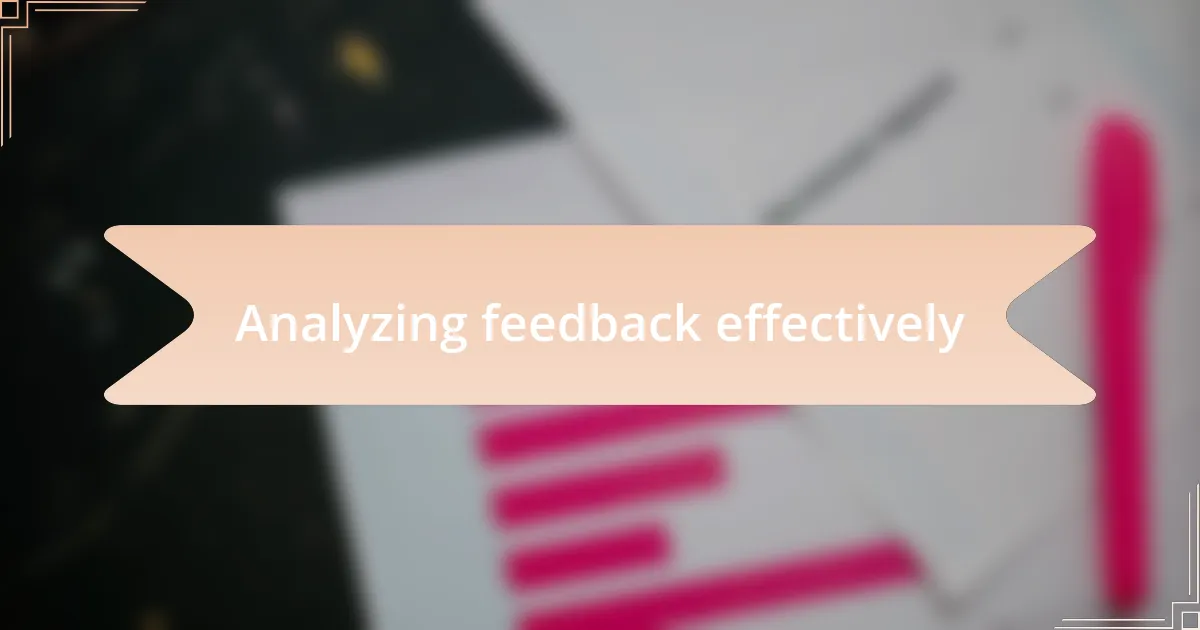
Analyzing feedback effectively
To analyze feedback effectively, I recommend looking for patterns and common themes rather than getting bogged down by isolated comments. During one of my user testing sessions, I noticed several participants struggled with the same infographic element, which highlighted a significant design flaw I hadn’t previously recognized. Isn’t it fascinating how collective feedback can uncover insights that individual comments might miss?
Another valuable strategy is to categorize feedback based on its urgency and impact. I often create a simple matrix that helps me prioritize which insights need immediate action and which can be addressed later. This approach has saved me countless hours of indecision. Have you ever felt overwhelmed by feedback and unsure where to start? Prioritization can alleviate that pressure.
Finally, I find it essential to follow up on the feedback received. After implementing changes from one session, I reached out to my participants to share updates and gather their views on the modifications. Their responses provided a deeper understanding of their needs and built a sense of community. How often do we take the time to circle back with users after changes? It’s a practice that not only enhances user trust but also drives continuous improvement.
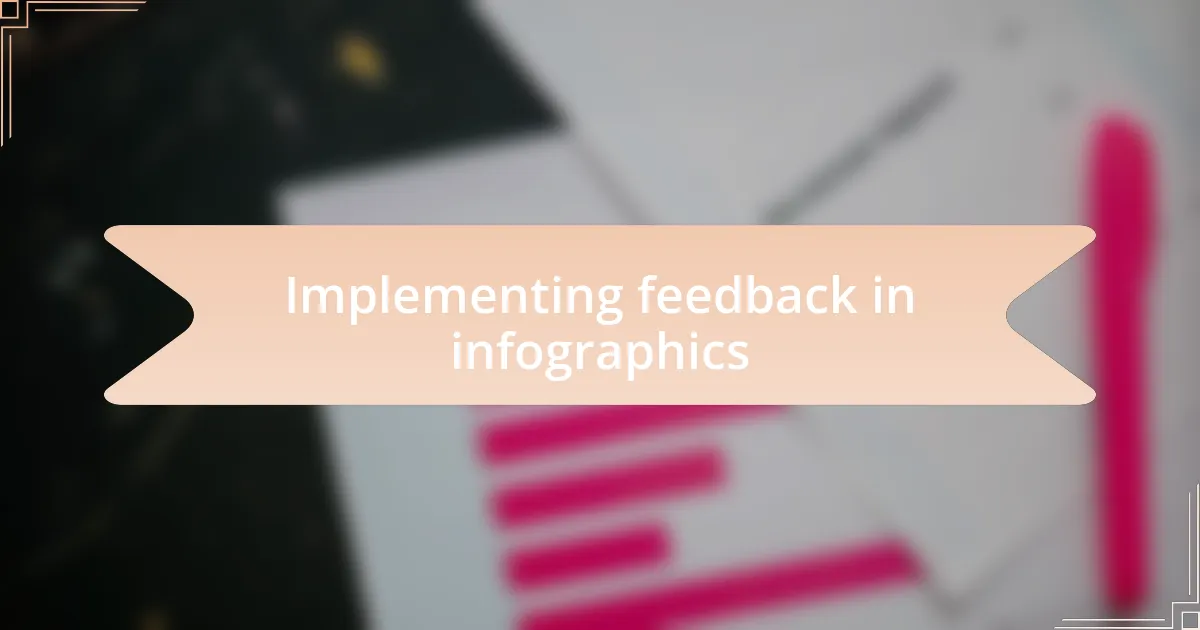
Implementing feedback in infographics
When it comes to implementing feedback in infographics, I often find it vital to stay open-minded. Recently, after a round of user testing, I was surprised by how a seemingly small detail—a color choice—received mixed reactions. Changing that color not only aligned the design with user preferences but also made the infographic more accessible. Isn’t it eye-opening how a simple tweak can enhance the user experience dramatically?
Moreover, I tend to involve my design team in brainstorming sessions after gathering feedback. One time, we faced a challenge with the layout that many users found cluttered. By collaborating and sketching new concepts together, we transformed their suggestions into an engaging and cohesive design. Collaboration often leads to unexpected ideas, don’t you think? It’s amazing to see how diverse perspectives can elevate a project.
Finally, I believe in testing the modified infographic with a new group of users. When we launched our revised version, I felt a mix of excitement and nervousness. This time, the feedback was overwhelmingly positive, confirming that implementing changes based on previous insights was indeed the right move. Have you ever experienced that sense of relief when your efforts pay off? It reinforces the value of listening and evolving, creating something that truly resonates with the audience.
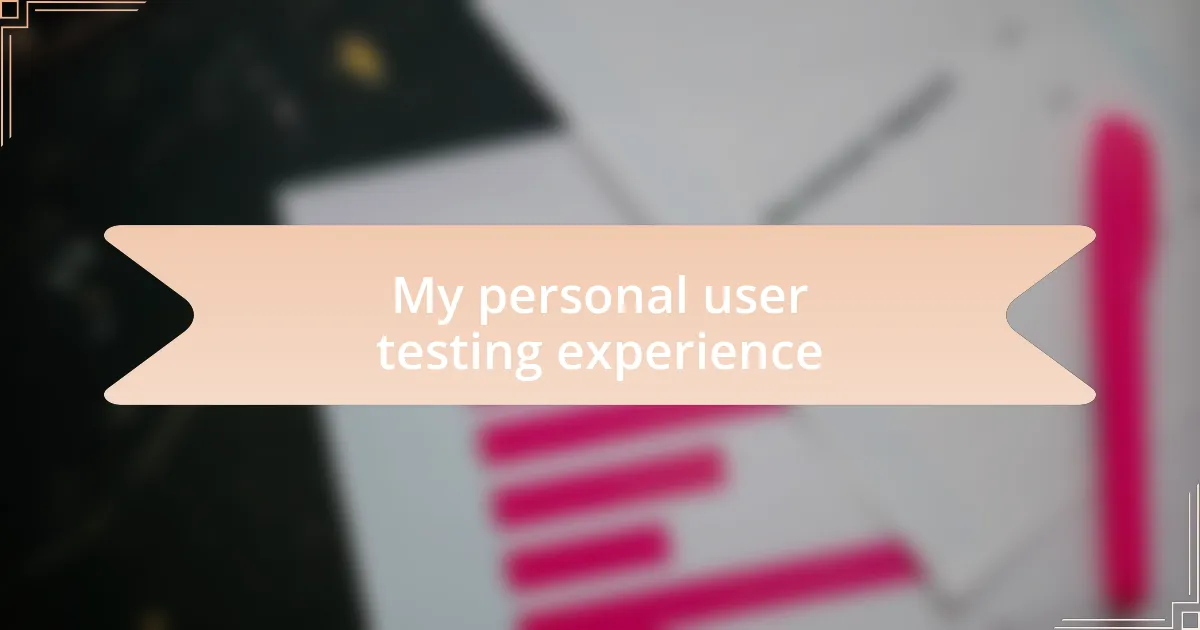
My personal user testing experience
During my user testing journey, I’ve encountered moments that truly shaped my understanding of audience needs. I remember one session where a participant paused at a particular infographic element and asked, “What does this even mean?” Their confusion highlighted a communication gap I had overlooked. It was an eye-opener for me, reinforcing how critical clarity is in design.
In another instance, after implementing user feedback, I felt a surge of anticipation before the next round of testing. This time, I watched keenly as users interacted with the changes we made. Their smiles and nods of approval felt incredibly rewarding. It reminded me how deeply user feedback can influence not just the design itself, but also the emotional connection users develop with the content.
I also learned valuable lessons about patience during the process. Not every piece of feedback can be immediately applied, and sometimes it’s a matter of testing what works best over time. Reflecting on this, I can’t help but think how user testing is a journey of discovery—one that continuously evolves as we gather insights from those who engage with our work. Does it resonate with you, too?